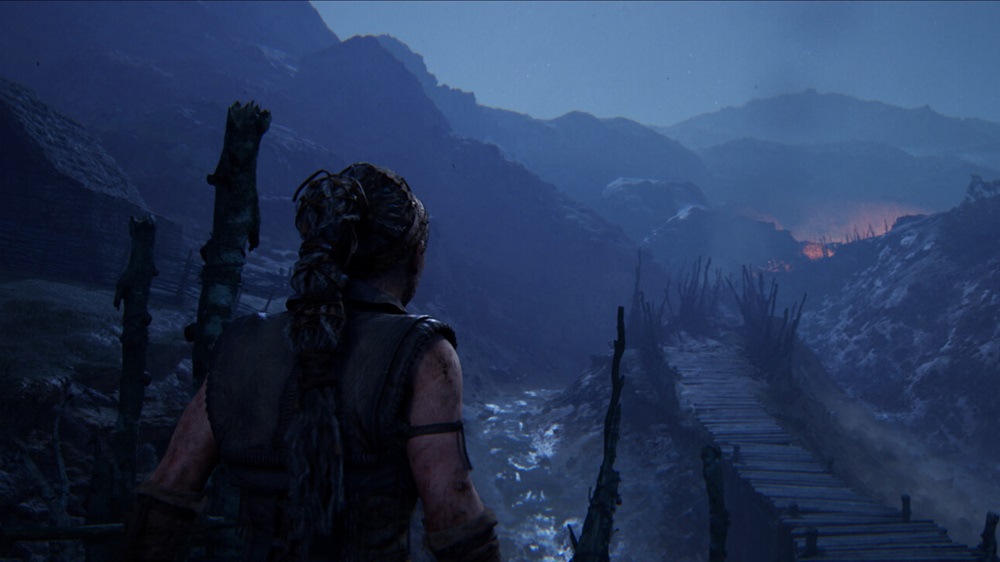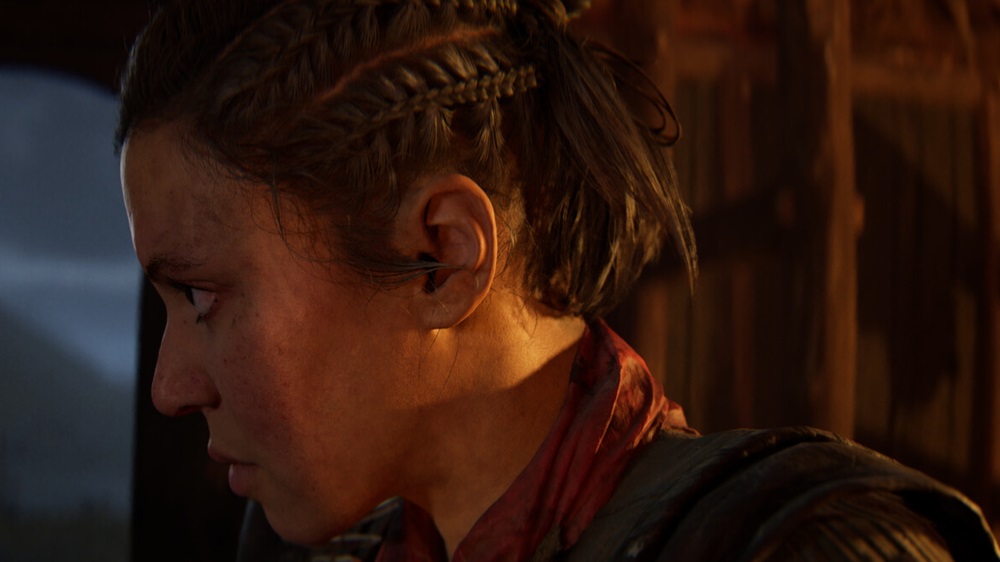Senua’s Saga: Hellblade II review
With every passing year since Senua’s Saga: Hellblade II didn’t, in fact, come out, my interest has waned a little more. Initially I was really hyped to play, but I ended up becoming frustrating that we never got any kind of release date. Now, five years after it was first announced, Ninja Theory’s follow-up is finally here. Xbox has few standout titles on the Series X|S, and it feels like everyone is waiting for the next one to be ‘the one,’ and while this one isn’t bad by any means, it doesn’t quite hit the highs of the original. Don’t get me wrong, there’s a lot going for it, but some puzzles are lacking, movement is slow at times, and the end left me feeling a bit empty.
Hellblade: Senua’s Sacrifice was all about Senua finding herself, coming to terms with who she is, and accepting the voices in her head as a part of her. It was a journey of self-discovery where she saved herself, whereas Senua’s Saga: Hellblade II is all about saving others. Without giving too much away, Senua travels across tenth-century Iceland in an effort to help those punished by violent Norsemen and slaying giants who haunt the land with their terrifying stature and cruel intentions. The story is a little muddled and doesn’t always explain itself, with certain aspects not always making sense, or hitting from left field without any warning.

There’s no clear journey or end goal until near the climax, and even when you get there it all just kind of stops rather abruptly. It’s still filled with some utterly breathtaking moments where its visuals blow you away, and when the phenomenal acting lands at the same time, the narrative hits on multiple levels. Senua is an excellent character, tormented by her past and constantly struggling with her Furies (the voices in her head), although there’s an interesting dynamic this time around. These voices almost respect her at times, and dare I say it, love her. Occasionally they snap at her reasoning and her emotional reactions to certain situations, but they feel different this time.
Other characters like Thorgestr, one of the aforementioned Norsemen, have great character arcs. It warms the heart seeing Senua make some friends, whether talking to Fargrimir, the wise voice by her side, or the fierce yet kind warrior known as Astrior. There are plenty of moments where it becomes thoroughly enjoyable, often involving the meetings Senua has with these giants.
Not all giants are evil, but like Senua, they suffer with memories of the past. Ninja Theory has always dealt well with mental health regarding Senua, but there are other themes they handle with such care you can’t help but respect them for it. It is in the more personable moments where it is at its best, and while the overall story isn’t its best feature, the dialogue, acting, and interactions throughout are excellent.

When it comes to the gameplay, there doesn’t feel like a lot has changed from the previous game other than the combat. It feels more streamlined yet satisfying, and like every element of Senua’s Saga: Hellblade II, the incredible visuals enhance how you play. For example, Senua can use light and strong attacks, and can dodge as well as parry. The difference is, certain cutscenes blend seamlessly with combat and make each fight feel different. You might slit the throat of one enemy, only for an ally to be thrown in front of you after a spear is lodged through his chest, or you get knocked back into another enemy in a short cutscene before you turn your attention to them.
You can also use focus to slow down combat after successfully landing strikes and parrying. These need to be used stategically as some enemies, especially the gruesome and terrifying Draugr, have a variety of dangerous and violent attacks. Some brutes use handaxes to swing at you with force; others hold shields that take a while to penetrate, and the worst are the firebreathers who always find a way to burn you to the ground. It can feel repetitive, but combat is fairly sparse when you do get into a fight, it feels important. There are also a variety of puzzles to solve, and while they’re well-designed for the most part, some became more of a chore.
These were my main bugbear in Senua’s Saga: Hellblade II. While they are clever, sometimes there seems to be a lot in quick succession which break the pace quite a bit. The game starts to implement the ability to focus on floating globes to change the environment which remove walls or obstacles, or alternatively add parts of the world that weren’t there before.The rune puzzles are smart, but I’d rather they be quicker to solve. And the puzzles aren’t the only element that hampers the pace.
You spend a lot of time walking around, following other characters while talking. While I don’t mind doing it a few times, it feels like you’re doing it too much. I think the purpose is to obviously to build its narrative, but you’re also getting to admire the photorealistic settings. It looks amazing in every sense, and both environments and character animations will leave your jaw on the floor. The dreamlike sequences are just as good as they were before, and the Icelandic scenery is gorgeous, not to mention the scale of the giants and the intense battles, which are superbly animated.
There’s an excellent video game inside Senua’s Saga: Hellblade II, but it doesn’t always show through. It looks phenomenal, sure, and has some incredibly brutal combat – and the acting is very good. But it’s also so slow at times, broken up by laborious puzzles and long periods of walking and talking, and has an ending that might fail to satisfy. Yet despite these issues, there’s a lot that Ninja Theory gets right in the sequel, and if you’ve been looking forward to playing it as long as I have, you’re unlikely to be disappointed.




